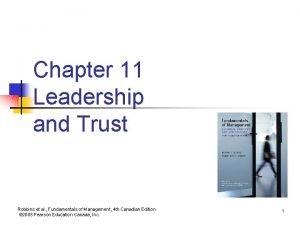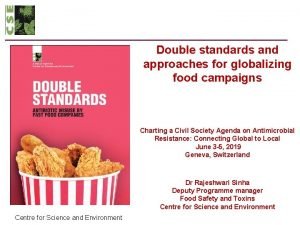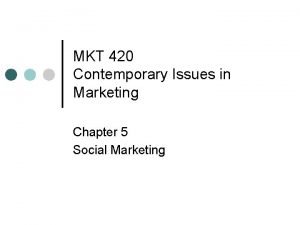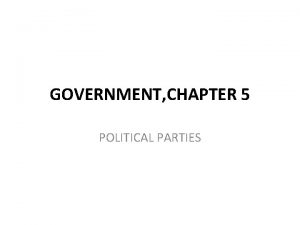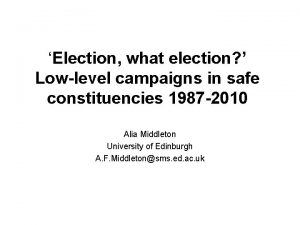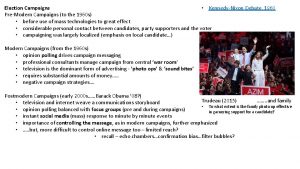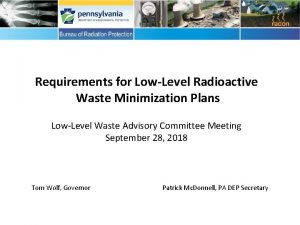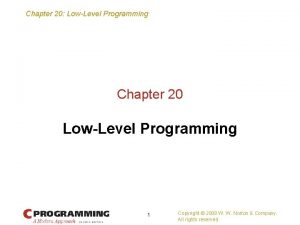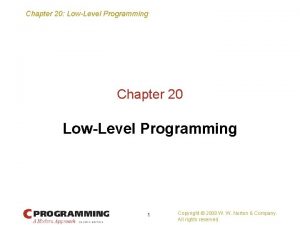Election what election Lowlevel campaigns in safe constituencies











- Slides: 11

‘Election, what election? ’ Low-level campaigns in safe constituencies 1987 -2010 Alia Middleton University of Edinburgh A. F. Middleton@sms. ed. ac. uk

Outline • • • Safe constituencies Identifying low-level campaigns Low levels of campaigning and safe constituencies Constructing the model Testing the model Conclusion – what challenges are there for campaigning?

A few things • • Campaigns as sources of information Vote share and turnout changes Can both mobilise and convert voters Why 1987 -2010?

Safe constituencies • • What are safe constituencies? Existing literature Seat change possible Strength in numbers

Identifying low-level campaigns • Enables a relative measure of campaigning – where are parties campaigning less? • Campaign expenditure – Denver et al 2004 Q 1 Campaign activity Q 2 Q 3 Q 4 Low-level

Identifying low-level campaigns - New measure - Incumbency and parties - Vote share vs. turnout Q 1 Low-level Q 2 Incumbent Q 3 Q 4 Campaign spend Q 1 Q 2 Opposition Q 3 Q 4 Low-level

Low level campaigning and safe constituencies • In most cases there is an association between high majorities and low-level campaigns • Incumbency matters: opposition candidates are more likely to run low-level campaigns • Party also matters

Constructing the model • Same model retained for both vote share and turnout • 2 groups of control variables – Political context – Socio-demographic context • Run only for safe constituencies

Testing the model i: low level campaigns and vote share • • • Incumbent vs. opposition Conservatives Labour Lib Dems In most cases low-level campaigns run by opposition parties depress vote share

Testing the model ii: low level campaigns and turnout • Combined measure for top two parties • Significant results 1997 onwards only • 2001 - low level campaigns by opponents reduced turnout by over 2 percentage points • In 2005, low-level campaigns by top two parties reduced turnout by 1. 2 percentage points

Conclusion • Opposition candidates typically run low level campaigns in safe seats • This is where the greatest detrimental impact is found • Campaigning is important; where it is lacking it can be harmful • Challenges to campaigning
 Liaison with external constituencies
Liaison with external constituencies Safe feed safe food
Safe feed safe food Safe people safe places
Safe people safe places Fast food campaigns
Fast food campaigns Behavior change campaign
Behavior change campaign Informed delivery multiple residents
Informed delivery multiple residents Interactive model of communication campaigns four phases
Interactive model of communication campaigns four phases Strategic brand communication
Strategic brand communication International marketing campaigns
International marketing campaigns 420 marketing campaigns
420 marketing campaigns Informed delivery campaigns
Informed delivery campaigns Economic protest parties definition
Economic protest parties definition
